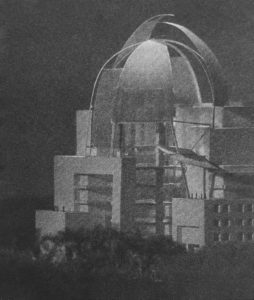If you call Rob Quigley’s San Diego office on a Friday afternoon, you reach a recording that tells you their hours are Monday through Thursday, 9:00 to noon and 1:00 to 5:00, and Fridays, 9:00 to noon. When I first encountered this message some years back, on a Friday afternoon, I imagined the whole staff out surfing with the rather laid-back principal of the firm. So what are they doing during that time? Since instituting the schedule 12 years ago, they have been working away in productive, noncompromised peace.
“The whole time crunch isn’t a new thing,” says Quigley. “We noticed a while ago that focused work time is constantly interrupted in a world where there is the expectation of universal availability.” Creating boundaries like not answering the phones a half day a week is one way to deal with it. The result, he says, is that “people get two days’ worth of work done in the four quiet hours on Friday.”
Quigley at first resisted computerizing his office. His rationale: “When I’d get my colleagues drunk, they would all admit that computers were eating them alive in terms of time.” Despite waiting in hopes that the technology would evolve past that point. Quigley finds that even the cutting-edge machines he’s installed often cause the office to be unproductive, affecting remuneration. “All these things,” he says, “that are supposed to save time—faxes, e-mail, computers—do just the opposite: they’re time sucks.”
While allowing that computers can be enormously helpful when it comes to large projects. Quigley thinks a lot of the time lost with the technology is spent trying to get it to do things it is not designed to do. Or perhaps, he ventures, it is not designed to do the things we need it to: i.e., ArchiCAD, which requires early exactness in design. Quigley is determined that the design process not be subverted. “Computers don’t make for better architecture:· he observes. “Rather, they can be detrimental. Someone said ‘Computers make bad architects more efficient’: I agree.”
Like most architects today, Quigley spends increasingly more time in meetings, a result of the complexity of contemporary architecture combined with the expectations of more consultants with more expertise. and of more bureaucracy for a project to negotiate. The entire process has become exponentially cumbersome. he says, yet clients want things ever faster.
Over the past decade Quigley has been doing buildings outside of San Diego County as well as at home. The travel and communication factor adds time stresses to his practice: a small firm having to cover bigger territory. Yet Quigley does not want to expand, preferring to keep the office to about 10 people in order to not need middle management-and in order to let him stay involved with design on a daily basis.

When he built the downtown building that contains his office and penthouse residence. Quigley wasn’t sure how it would be to live so close to work. It has turned into an enormous time saver. “I don’t know what I’d do if I had two hours of commuting every day,” he says, happily reporting that he never misses dinner and goes upstairs for lunch whenever he can. The midday break from the office gives him a little contemplative time. which he feels is required to do good work.
Rob Quigley is an architect who controls the time demands on practice so that he can have a life. “After I had kids. my priorities shifted,” he says. “I stopped working weekends. It is only on an extraordinary occasion that I do so now.”
For those who are curious. the answer is yes. He still surfs.
Originally published in early 2000, in arcCA 00.1, “Zoning Time.”





